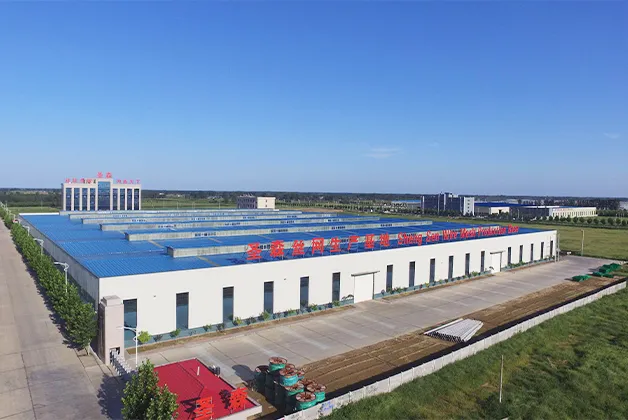-
 Phone:
Phone: -
 Email:
Email:

chain link fence
Understanding Chain Link Fencing A Durable and Versatile Solution
Chain link fencing is a popular choice for both residential and commercial properties. Its practical nature, affordability, and ease of installation make it a go-to option for many people. This article delves into the various aspects of chain link fencing, highlighting its benefits, applications, installation process, and maintenance tips.
What is Chain Link Fencing?
Chain link fencing consists of interwoven steel wires, forming a diamond pattern. It is typically mounted on metal posts embedded in concrete for stability and support. The fencing is available in various heights, gauge thicknesses, and coatings, including galvanized and vinyl-coated options. Galvanized chain link fencing has a zinc coating that provides resistance against rust and corrosion, while vinyl-coated options add aesthetic appeal with a variety of color choices.
Benefits of Chain Link Fencing
One of the most significant benefits of chain link fencing is its affordability. Compared to wooden or vinyl options, chain link fencing is relatively inexpensive, making it an ideal choice for those on a budget. Moreover, its long lifespan means fewer replacements need to be made, ensuring cost-effectiveness over time.
Security is another major advantage of chain link fencing. Its sturdy construction creates a formidable barrier, making it difficult for intruders to access a property. Adding barbed wire on top can enhance security further, making it a popular option for commercial properties and industrial sites.
Chain link fencing is also incredibly versatile. It can be used for a wide range of applications, including enclosing backyards, playgrounds, athletic fields, warehouses, and industrial yards. Its transparent nature allows visibility while still providing a degree of privacy, striking a balance between openness and security.
Additionally, the durability of chain link fencing is unmatched. It can withstand harsh weather conditions, including strong winds and heavy rain. Unlike wood, it does not warp, crack, or rot, meaning that it requires minimal maintenance over time.
Installation Process
chain link fence

Installing chain link fencing is a straightforward process, especially for those who are somewhat handy or willing to follow DIY instructions. The first step involves planning the layout and determining the amount of material needed. This is followed by marking the locations for the fence posts, which are typically spaced 6 to 10 feet apart.
Once the post locations are marked, holes are dug, and the posts are set in concrete to ensure they remain stable. After the posts are securely in place, the chain link fabric is unrolled and attached to the posts using tension bands and clips. The final touches may include adding gates and tensioning the fabric to ensure it remains taut.
Although the installation process can be completed by homeowners, hiring professional installers can save time and ensure that the fence is constructed to last.
Maintenance Tips
While chain link fencing is low maintenance, there are still some essential care tips to keep it looking great and performing well. Regularly inspect the fencing for rust, especially if it is made of galvanized steel. If you notice any rust spots, treat them immediately with rust-inhibiting paint to prevent further damage.
Cleaning the fence occasionally with soap and water can help remove dirt, debris, and any build-up that may occur over time. For vinyl-coated versions, a gentle cleaning solution is recommended to avoid damaging the coating.
If the fence is damaged, repair sections as needed. Replacement of individual posts or sections of the chain link fabric is often manageable and can help maintain the overall integrity of the fence.
Conclusion
Chain link fencing emerges as a wise investment when considering options for defining boundaries, enhancing security, or enclosing spaces. Its distinct combination of affordability, durability, and versatility makes it a popular choice for various applications. Whether for residential gardens or industrial sites, chain link fencing proves to be a functional solution that meets diverse needs while requiring minimal maintenance. Understanding its benefits, installation process, and care tips can help property owners make informed decisions and enjoy long-lasting results.
-
Wire Mesh for Every Need: A Practical SolutionNewsJul.25,2025
-
Steel Fences: Durable, Secure, and Stylish OptionsNewsJul.25,2025
-
Roll Top Fencing: A Smart Solution for Safety and SecurityNewsJul.25,2025
-
Cattle Farm Fencing Solutions for Maximum SecurityNewsJul.25,2025
-
Affordable Iron Binding Wire SolutionsNewsJul.25,2025
-
Affordable Galvanized Wire SolutionsNewsJul.25,2025
-
Wire Hanger Recycling IdeasNewsJul.25,2025








